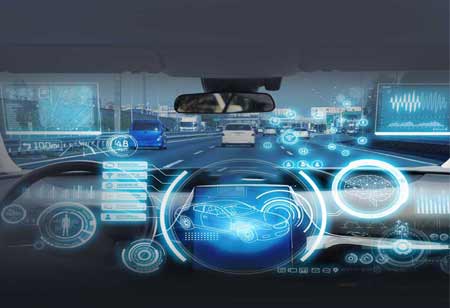Thank you for Subscribing to Auto Business Outlook Weekly Brief
Sensor Cleaning Technologies Provide Safety In Automated Driving
Around 1.35 million people are killed yearly in traffic accidents.

By
Auto Business Outlook | Wednesday, April 19, 2023
Stay ahead of the industry with exclusive feature stories on the top companies, expert insights and the latest news delivered straight to your inbox. Subscribe today.

Like any other vehicle on the street, an autonomous vehicle (AV) must be maintained clean. The problem has less to do with aesthetics and more with protection—blocked sensors could render active safety methods inefficient and induce a collision in the worst-case system.
FREMONT, CA: Around 1.35 million people are killed yearly in traffic accidents. As the majority of autonomous vehicles (AV) rises, so will the requirement for effective road safety interferences, like bettered road infrastructure and evolved sensor cleaning techniques.
Smart vehicles depend on sensor systems to gather external data that trigger automated and autonomous movements. Still, outside sensors are exposed to external conditions, for example, dust, mud, insects, and road debris. Thus, it is not acceptable to preserve sensors clean before vehicle movement. Since autonomous vehicles depend on different sensors to operate, they must stay pristine while in travel. The purpose is to bypass samples where a sensor may evolve hidden during a turn or other scheme, thus controlling accidents.
Here, sensor cleaning techniques play a vital role.
New safety needs and the deployment of autonomous technology in each vehicle class are moving the rapid growth in the number of sensors in automobiles. As automobiles move toward higher automation, the importance of clean sensors will just grow. The intent is to develop the path for future transportation while securing the safety of both individuals and vehicles.
Industry players deliver four distinct types of sensor cleaning solutions. These technologies contain wiper and jet technology, defensive materials, passive/active aerodynamics, and refined experimental technologies, like ultrasonic cleaning and anti-fogging.
The confluence of sensor-cleaning systems
It is unsustainable to depend on a single technology to fulfill the sensor cleaning requirements of a complete AV. Thus, connecting two or more technologies will make cleaning mobile sensors more bearable and effective.
Incorporating wiper and jet technologies with defensive materials for Level 1 or 2 autonomous vehicles will greatly improve cleaning performance. Moreover, utilizing protective materials in alliance with passive/active aerodynamics systems in Level 3 AV will follow in a defensive and preventative solution. This can reduce the vehicle's total mass.
Also, a proper mix of aerodynamics and sophisticated oil-free scroll technology will deliver preventative, responsive, and more effective outcomes in Level 4 and 5 autonomous vehicles. Hence, this will evolve into the most useful cleaning solution for AV equipment.
As the market for driverless vehicles is anticipated to achieve a tipping point by 2025, many ADAS and autonomous vehicle developers are studying novel automotive sensor-cleaning solutions. Moreover, the global market for automotive sensors is planned to get 23,6 billion units by 2034.






